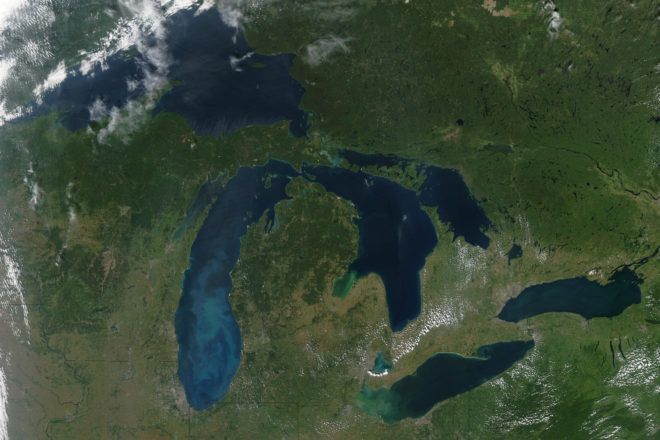By the Numbers: The Great Lakes
- Share
- Tweet
- Pin
- Share

The Great Lakes face many challenges, almost all of them human-made problems.
1
The percentage of water in the five lakes that turns over annually, meaning pollutants are likely to stay in place.
9
The number of miles from Lake Michigan that an adult Asian carp was found in 2017. It had gotten past electric barriers that serve as the last line of defense in keeping the voracious carp out of Lake Michigan.
186
The number of invasive species that have been introduced into the lakes since the early 1900s.
362
The number of contaminants identified by the EPA in the Great Lakes system. Only about a third of them have been evaluated for their effects on wildlife and human health. Eleven have been identified as “critical pollutants” requiring immediate attention because they bioaccumulate in organisms and persist in the environment. That list includes PCBs, DDT and mercury.
1947
The year the invasive sea lamprey had officially invaded all five Great Lakes.
1993
The year the rule was adopted calling for oceangoing ships to flush their ballast tanks before entering the Great Lakes system. Invasive species had been entering in ballast water.
6.7 million
The number of cubic meters of Great Lakes water used by Great Lakes watershed municipalities annually. Quadruple that is used by industry.
22,000,000
The number of pounds of plastic pollution that enters the Great Lakes each year, according to scientists at the Rochester Institute of Technology.
33,000,000
The number of people who live in the Great Lakes watershed in eight U.S. states and two Canadian provinces.
Trillions
The number of gallons of untreated human sewage sent into the lakes annually as the result of rainstorms and failed septic systems.
Sources: epa.gov, greatlakes.org, ncbi.nim.nih.gov, healthylakes.org


